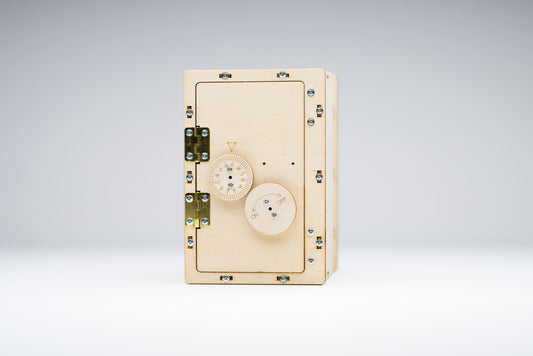In the world of childhood development, play is not just a simple activity; it's a crucial part of learning. This is especially true when it comes to STEM (Science, Technology, Engineering, and Mathematics) toys, which combine education and entertainment to create engaging, skill-building experiences. At Young Inventors, we believe that introducing STEM toys at an early age can spark a lifelong passion for science and technology. Here’s how these toys are shaping the future scientists, engineers, and innovators of tomorrow.
Cultivating Curiosity and Critical Thinking
STEM toys inherently encourage curiosity. By integrating elements of problem-solving, design, and experimentation, these toys challenge young minds in exciting ways. For instance, a simple robotics kit from Young Inventors allows children to assemble and program their own robots. This not only teaches them basic coding and mechanical skills but also encourages them to ask questions like "What makes this work?" or "How can I make it better?" This kind of inquiry-based learning develops critical thinking skills that are vital for scientific reasoning and investigation.
Developing Persistence and Problem-Solving Skills
One of the most valuable impacts of STEM toys is their ability to teach children persistence through trial and error. When a project doesn’t work as planned, it provides a safe and constructive opportunity for children to learn from failure. Take, for example, a Young Inventors kit designed to build a small bridge or tower. Children will try different construction techniques and materials, learning about stability and weight distribution along the way. The process teaches them that failure is not a setback but a stepping stone to success, encouraging a growth mindset that is essential for any scientific endeavor.
Encouraging Hands-On Learning
STEM toys by nature are tactile and interactive. This hands-on approach is crucial because it transforms abstract concepts into tangible experiences. For children, seeing and touching the elements of a project can demystify topics like electricity, physics, or biology. Young Inventors kits, for instance, might include building a miniature wind turbine that helps explain concepts of renewable energy. This direct interaction enhances understanding and retention, making complex subjects accessible and exciting.
Inspiring Teamwork and Communication
Many STEM projects require collaboration, which is a critical skill in most scientific and engineering environments. Young Inventors promotes this through kits that encourage group activities, facilitating an environment where children can share ideas and solve problems together. This not only improves their communication and teamwork skills but also prepares them for future workplace environments that value collaboration and diversity of thought.
Bridging Theory and Application
Perhaps one of the most significant contributions of STEM toys is how they bridge the gap between theoretical knowledge and real-world application. By using toys that mimic real-world systems, children can see the practical applications of their learning. For example, a chemistry set from Young Inventors that allows kids to conduct safe chemical reactions at home can ignite an interest in chemical engineering or pharmacology.
Conclusion
At Young Inventors, we understand that today’s play can lead to tomorrow’s passion. By providing children with tools that are not only fun but also educational, we are helping to cultivate the next generation of thinkers, innovators, and leaders. STEM toys are more than just toys; they are the building blocks for lifelong learning and curiosity. As we continue to innovate and expand our offerings, our goal remains the same: to turn play into passion and curiosity into careers





